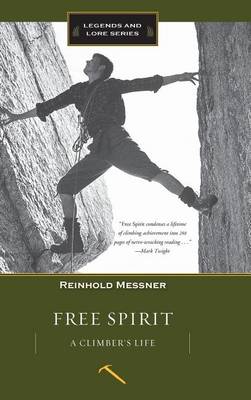Reinhold Messner had the ideal childhood for a climber. Born in the South Tyrol under the shadow of the Geislerspitz of parents who took him on his first climb on the Sass Rigais at the age of five, he grew up loving and learning every metre of his native Dolomites, and honing on them the basic mountaineering skills which were to lead him to set himself the harder and harder challenges which in turn rolled back the frontiers of the possible for a whole generation of climbers. He describes his early climbs in the Eastern Alps, notably with his brother Gunther, armed at first with one helmet between them and two massive pitons forged by the village blacksmiths. His first solo follows, his attention turns to north faces, to winter climbs and a series of exceptional first ascents at higher and higher grades through the sixties. As he climbed, so he evolved his philosophy of the single free-climbing line which renounces the use of bolts and would prefer to make compromises on line rather than style.
His first overseas trip was to Cordillera Huayhuash in Peru where he shows he had ability on big snow and ice climbs as well as rock, and the following year he made his first trip to the Himalaya, the part of the world in which most of his reputation now rests. With his brother Gunther he climbed Nanga Parbat, but Gunther was killed in the descent. As equipment, technique and climbing psychology developed, Messner was in the forefront of the transference of fast lightweight Alpine methods to the greater ranges of the world and between 1970 and 1986 he became the first man to climb all the fourteen 8000-metre peaks, some more than once, invariably by a new route or new tactics and with few companions. Messner was the first man to climb Everest without oxygen and, two years later, the first man to climb it solo.
- ISBN10 1594859485
- ISBN13 9781594859489
- Publish Date 3 June 2014 (first published 21 March 1991)
- Publish Status Unknown
- Imprint Mountaineers Books
- Format Hardcover
- Pages 290
- Language English
